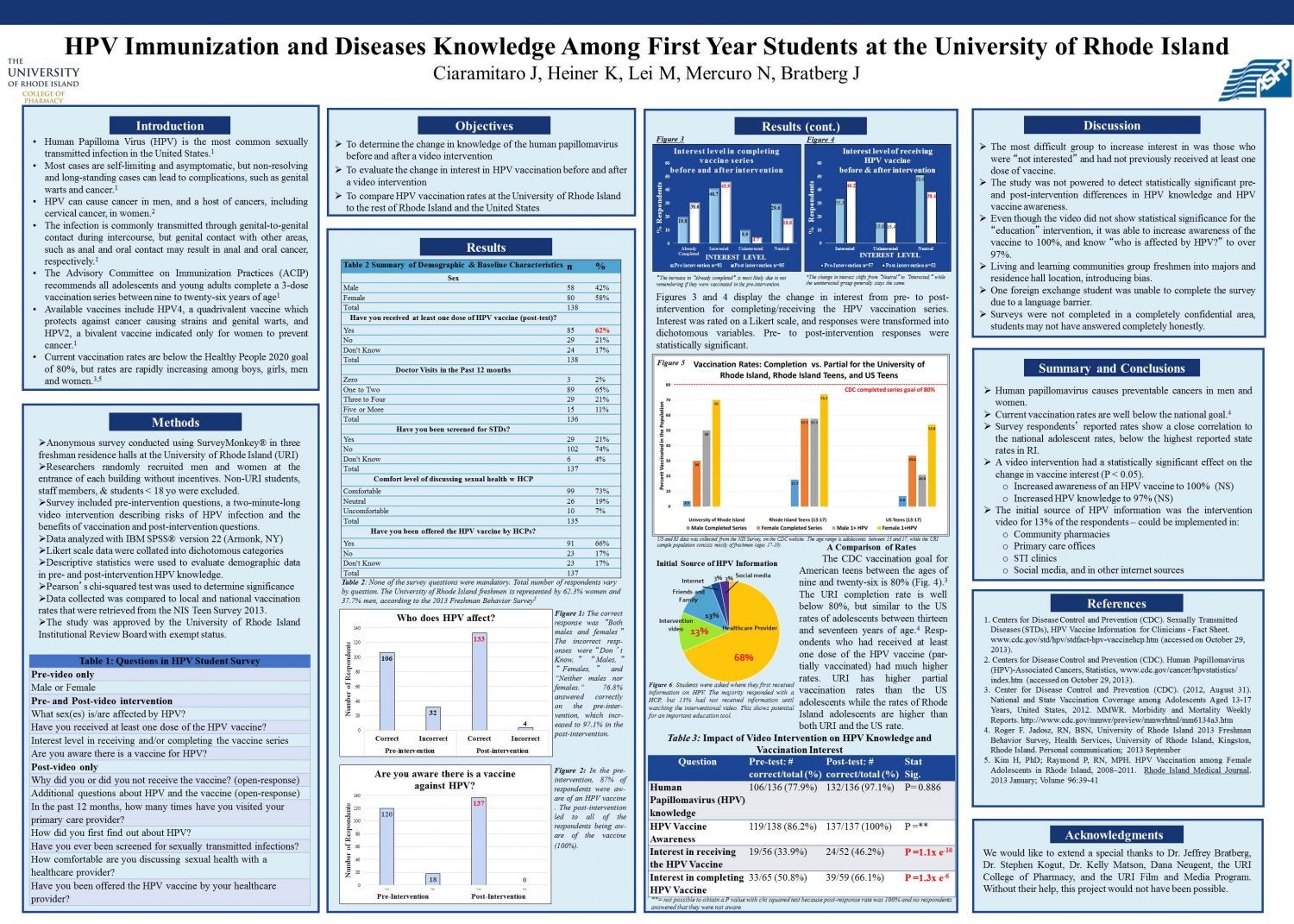- Presented at ASHP Midyear 2013
- Ciaramitaro J (PharmD Candidate), Heiner K (PharmD Candidate), Lei M (PharmD Candidate), Mercuro N (PharmD Candidate), Bratberg J
Research
- Human Papilloma Virus (HPV) is the most common sexually transmitted infection in the United States.1
- Most cases are self-limiting and asymptomatic, but non-resolving and long-standing cases can lead to complications, such as genital warts and cancer.1
- HPV can cause cancer in men, and a host of cancers, including cervical cancer, in women.2
- The infection is commonly transmitted through genital-to-genital contact during intercourse, but genital contact with other areas, such as anal and oral contact may result in anal and oral cancer, respectively.1
- The Advisory Committee on Immunization Practices (ACIP) recommends all adolescents and young adults complete a 3-dose vaccination series between nine to twenty-six years of age1
- Available vaccines include HPV4, a quadrivalent vaccine which protects against cancer causing strains and genital warts, and HPV2, a bivalent vaccine indicated only for women to prevent cancer.1
- Current vaccination rates are below the Healthy People 2020 goal of 80%, but rates are rapidly increasing among boys, girls, men and women.3,5
Related People: Jeffrey Bratberg

